
Park funding programs seek balance
It has been said that the National Park Service is one of America’s “best ideas.”
Based on the hope that the jewels of the land could be protected for all prosperity, the NPS has evolved from an idea to a park hosting nearly 300 million visitors a year in the 91 years since its creation.
America’s best idea can be originated from the artist George Catlin, who in 1832 expressed his hope to one day see the creation of a nation’s park that would contain all the natural beauty seen in the United States.
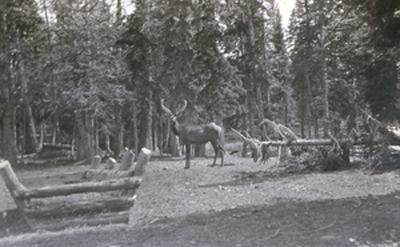 |
Yellowstone National Park in 1906 (Photo courtesy of the National Park Service). |
It wouldn’t be until 32 years later that the federal government began taking steps towards the creation of such a park and 84 years until President Woodrow Wilson signed an act establishing a National Park Service within the Department of the Interior.
From the original 14 parks, 21 monuments and one reservation covering six million acres to 390 units covering 84 million acres, the park service has seen exponential growth and tremendous expansion in its lifetime.
Despite the obvious advantages of having such a developed and vast park system, there are challenges to its ability to maintain itself at the level it was envisioned to be maintained.
“Congress has been adding more park system areas and not increasing funding,” said Michael Jester, facility manager at Everglades National Park in Florida. “There are a lot of start-up costs associated with new parks and we are having to take from existing parks to fund them.”
Sadly, inadequate funding for maintenance and management of the parks has become widespread and commonplace.
“There is definitely an underfunding issue in the National Park Service,” said Linda Miller, secretary at the public affairs office at Yellowstone National Park in Wyoming.
With the acceptance of such an obstacle to the park service and the downfalls that may follow it raises another issue. The allocation of the limited funds that are available and the balancing between resource management and visitor services are often the center of debate.
“The annual budget we are allocated hasn’t allowed for us to keep pace with the cost of operation and maintenance,” said Jester.
| The blue skies over mountains at Yellowstone National Park (Photo courtesy of the National Park Service). | 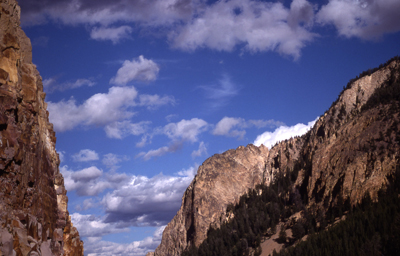 |
As the agency’s core mission to conserve natural and historic objects for the enjoyment of future generations, each park must come to balance its budget in a way so that it can fulfill such an ideal while still maintaining park services for the enjoyment of millions of visitors today.
In consideration of this budgetary dilemma, is it possible to actually balance the two without compromising one or the other?
In June of 2000, National Park Service Director Robert Stanton asked the National Park System Advisory Board to take a long-range look at the future of the National Park Service and issue a report with its finding.
According to a 2001 report, the National Park System Advisory Board found that in giving priority to visitor services, natural resources suffer. A plan of rethinking the priorities of the system under the current administration and reformulating its approach to the park service’s mission and duties was deemed necessary.
The reality of the situation and the action taken in subsequent legislation can be said to be the opposite of the advisory board’s suggestion. With the shift of priorities taking place after 9/11 and with the budget request of fiscal year 2007, President Bush proposed cutting the park service’s budget by $100 million, in contrast to his campaign promises of eliminating the $4.9 billion backlog in the national parks’ infrastructure.
“Since the National Park Service needs more money and we can’t lobby, issues need to be addressed at a park-by-park basis,” said Connie Rudd, superintendent of Black Canyon of the Gunnison National Park in Colorado. “Agencies analyze the core mission of each park and determine its priorities.”
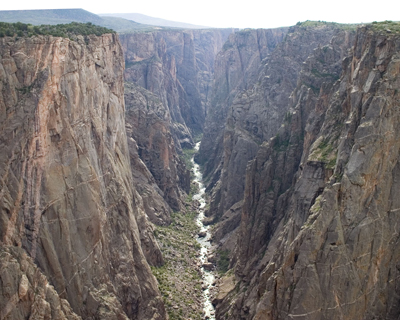 |
Black Canyon at Gunnison National Park creates stunning natural scenery (Photo courtesy of the National Park Service). |
For example, at Black Canyon of the Gunnison National Park, these priorities fall into three broad categories:
First, wilderness management encompasses the highest level of environmental protection of geologically unique resources and endangered species. Second, the issue of water is an age-old matter with a highly litigious nature nowadays. Thirdly, visitor education plays a heightened role in the protection of natural resources.
“I don’t want to say that visitors are a threat to natural resources,” said Rudd. “But there is a need to educate visitors in how to interact with wildlife. This protection of visitors and natural resources allows for the accommodation of more visitors, which is a good thing.”
Another point to be considered is that with such limited funding at the outset, the further limiting of such allocations within the park for a variety of focuses and increased demands of such park services, whatever money does end up making it to these efforts is usually severely restricted and forces strict prioritization.
“Every dollar spent must be of the highest priority,” Rudd said. “Priority is determined by purpose with which the park was established. This means that middle priorities, which are very important, aren’t done.”
With this in mind, it is easy to see why a growing dependence on volunteer services and cooperating associations has become vital to the success of the national parks.
Many times, when a paid position vacates at a park, the only way to get work done is through the dependence of volunteers. The abandonment of traditional ranger services has been directly alleviated by the support of resident hosts who volunteer to fulfill such pressing duties as emergency management and visitor services.
| The natural light gives different views of Black Canyon (Photo courtesy of the National Park Service). | 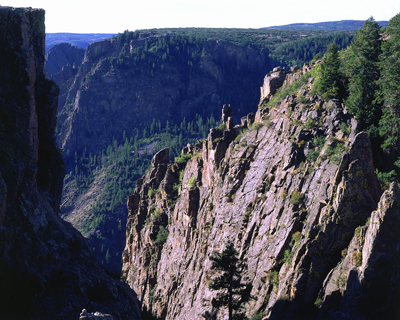 |
The Volunteers-in-Parks Program (VIP) was created by public law in 1970 to serve as a vehicle for the acceptance and utilization of volunteer services in the national parks. Its purpose has been to maximize the benefit of such volunteers from the perspective of the park and the volunteers.
In fiscal year 2005, 137,000 volunteers donated 5.2 million hours at a value of $91.2 million. Their skills and talents are not limited to simple administrative duties, but such important responsibilities including resource management and allocation, planning and infrastructure and volunteer engagement are extended to their realm of dependability.
Another tradition within the park service involves the dependence of the parks on philanthropy as a source of income. It is for this reason that various “Friends” groups, the National Park Foundation and cooperating associations donate over $75 million a year.
The National Park Foundation was created in 1967 in the recognition of the importance of private philanthropy. It works to continue the generation of private sector support for the National Park Service and thereby builds the tie between the parks and its advocates.
“As taxpayers, national parks belong to each of the American people, but for those who express that added support—through a donation, by volunteering, or even just by passing along the knowledge of how special these places are – the bond is strengthened, and the protection of national parks is ensured for future generations,” as Barry Mackintosh, a National Park Service historian, once wrote.
Another source of philanthropic donation to the park service comes in the form of “Friends” groups associate with individual parks. They enable endowments from private donations for the benefit of the fulfillment of priorities that are often neglected.
For example, Friends of Acadia is partners in raising support for such issues at Acadia National Park in Maine.
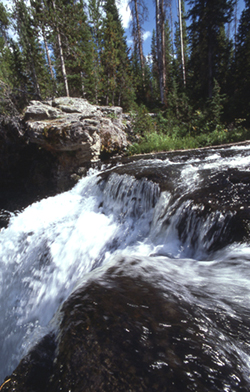 |
A stream rushes over rocks at Yellowstone National Park (Photo courtesy of the National Park Service). |
While placing an emphasis on the literal and philosophical connection between the people and the park, Friends of Acadia is able to raise $9 million for the maintenance of trails, construction of stone markers, monitoring trail and carriage use and hiker advising. This allowed for park capital expenditures to be augmented and the purpose of the parks to be further represented in these efforts.
“Friends of Acadia is one of the only friend groups who focuses on areas of support other than just fundraising,” said Lisa Horsch, director of Development at Friends of Acadia. “We have three main panels including fundraising, advocacy on issues facing Acadia and a cooperating program with thousands of volunteers.”
As in the Acadia community and the funds raised by private entities to benefit the park, the positive partnership between the park, donors and benefactors fosters improved community relations that directly lead to increased annual progress attained within the scope of federal limitations.

Comments are Closed